![]() presents
presents
![]() presents
presents
After half a decade with Blue Bird and half a decade with Thomas, Mercer County's school fleet in 2019 was ripe for another vendor change. So it came to pass...the dust settled, and the school board found itself in the customer's seat of Worldwide Equipment, an IC Bus dealership with branches in West Virginia and six other eastern states.
This was a homecoming: The first International-based school buses in the county since 2004, and the first new IC, Ward, or AmTran buses since 1997. Of course, these buses were a far cry from the Wards and AmTrans of old: The IC CE featured a modern, car-like driver's area with ergonomic controls and a one-piece windshield. Chassis and cowl were based upon International's contemporary 4000-series DuraStar trucks. International had long been renowned for its diesel engines; however, major reliability issues with the MaxxForce 13 line and its exhaust gas recirculation technology severely tarnished their standing in this area. IC switched its line to Cummins engines with the 2016 model year, and Mercer County's 2020 buses were equipped accordingly.
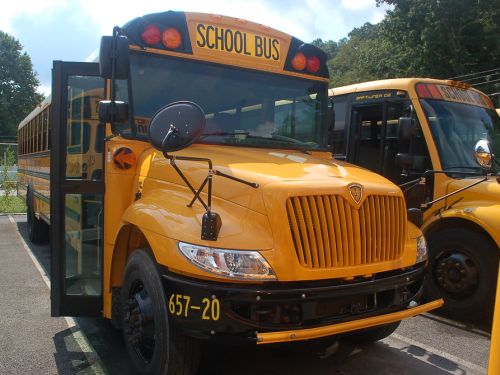
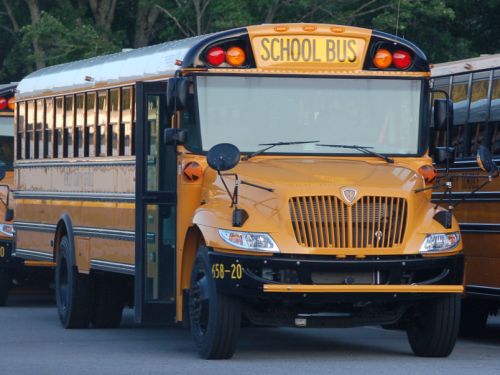
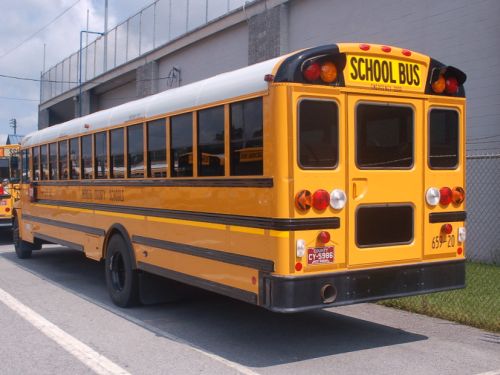
It can't be said that the IC CE doesn't have a very commanding stance. #657-659 are 77-passenger models with 13 windows per side, contrasting with the 12-window arrangement with unequally-sized panes used by equivalent-capacity Blue Bird buses. Note also the four sets of backup lights, similar to the configuration on Thomas C2s. [Photos by Adam Ross, 2020]
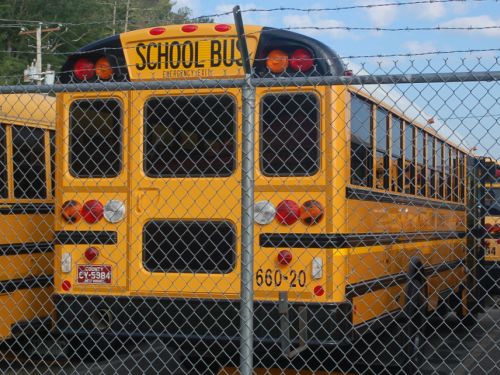
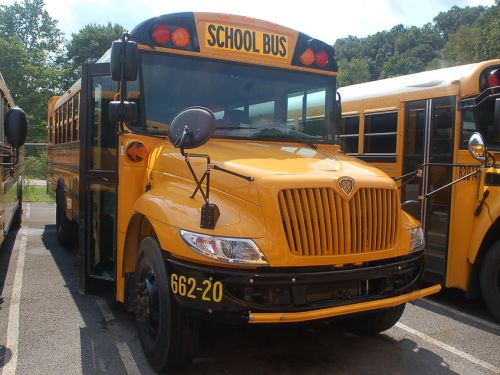
#660 and #662 are 59-passenger IC CE buses, respectively without and with wheelchair lifts. These buses retain the vertical rear panel first seen on Ward bodies in the 1970s, but with taller windows, high headroom, and a redesigned roof cap. [Photos by Adam, 2020]
| Bus |
Year |
Body |
Chassis |
Cap. |
Notes |
|---|---|---|---|---|---|
| 657 | 2020 | IC | (CE) | 77 | 4DRBUC8N9LB850504. |
| 658 | 2020 | IC | (CE) | 77 | 4DRBUC8N0LB850505. |
| 659 | 2020 | IC | (CE) | 77 | 4DRBUC8N2LB850506. |
| 660 | 2020 | IC | (CE) | 59 | 4DRBUC8N9LB812433. |
| 661 | 2020 | IC? | (CE?) | ||
| 662 | 2020 | IC | (CE) | 59 | 4DRBUC8N2LB809535. Rear wheelchair lift. |
2020 and 2021 were years of challenge...to put it very mildly. Lives and school schedules were disrupted for months by the COVID-19 pandemic. Mercer County was extremely hard-hit, with over 9,400 people sickened by November 2021: 2,000 more than the entire populations of Princeton, Athens, Bramwell, and Oakvale put together.
Much of the suffering was preventable. Safe and effective vaccines were developed in record time, and made available for free. Yet West Virginia's take rate was pathetically low...in spite of the fact that West Virginia had traditionally been the single most pro-vaccine state in the country. Unfortunately, there are too many West Virginians today who reject their own history in a suicidal quest.
If Mercer County's 2020 model IC buses seemed to hark back to an earlier era, its 2021 models were even more of a throwback. The superfluous fleet number model-year suffixes began to be omitted once again, leaving the flanks of buses demarcated by clear and easy-to-read three-digit identifiers for the first time since 2010.
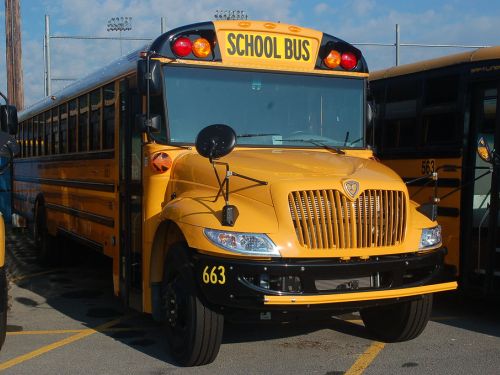
2021's buses are of a more heterogeneous capacity mix than the previous year's, with #663 being the only 77-passenger example in the mix. [Photo by Adam, 2020]
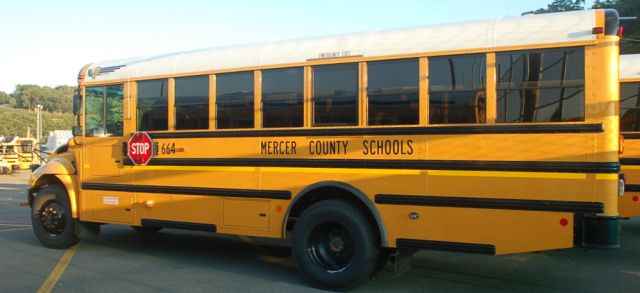
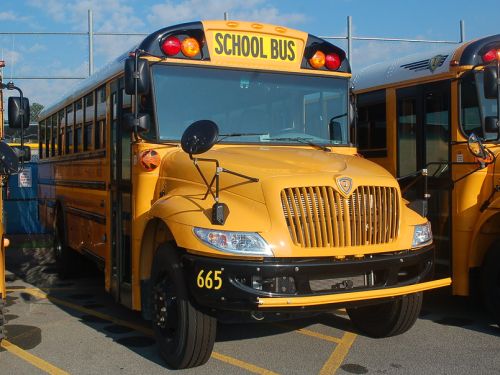
#664 and #665 are both short models of 47-passenger capacity. (Where's the bus #666?) Buses of this size are relatively uncommon, but have always been a fundamental part of the county's fleet since full-size buses are incapable of traversing the most treacherous, winding mountain roads. [Photos by Adam, 2020]
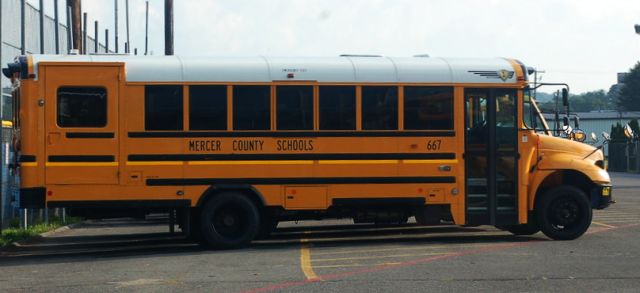
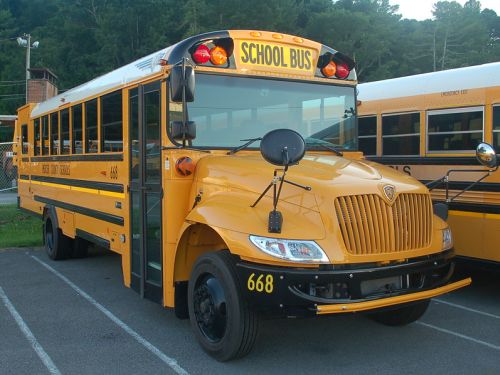
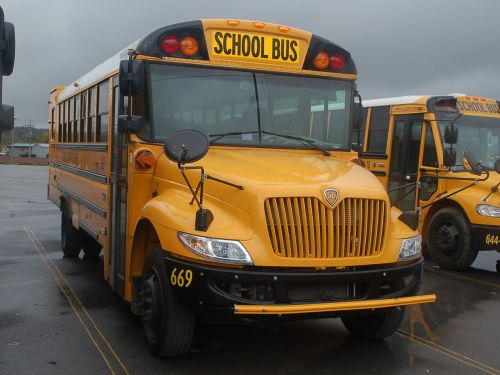
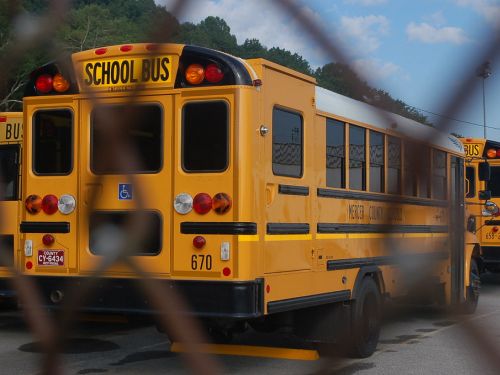
#667 through #670 are wheelchair-accessible lift buses. #669 does not have a split windshield; the effect in the photo is caused by the reflection from a nearby lightpole. [Photos by Adam, 2020 and 2021]
| Bus |
Year |
Body |
Chassis |
Cap. |
Notes |
|---|---|---|---|---|---|
| 663 | 2021 | IC | (CE) | 77 | 4DRBUC8N4MB674186. |
| 664 | 2021 | IC | (CE) | 47 | 4DRBUC8N1MB673285. |
| 665 | 2021 | IC | (CE) | 47 | 4DRBUC8N3MB673286. |
| 666 | Presumably skipped. | ||||
| 667 | 2021 | IC | (CE) | 53 | 4DRBUC8N4MB121084. Rear wheelchair lift. |
| 668 | 2021 | IC | (CE) | 53 | 4DRBUC8N6MB121085. Rear wheelchair lift. |
| 669 | 2021 | IC | (CE) | 53 | 4DRBUC8N8MB121086. Rear wheelchair lift. |
| 670 | 2021 | IC | (CE) | 53 | 4DRBUC8N2MB121083. Rear wheelchair lift. |
New bus purchases continued uninterrupted throughout the pandemic. Not that there haven't been surprises. Though they looked similar to the previous year's buses, Mercer County's 2022-model ICs were a virtual bombshell in what they represented: The first new gasoline-powered school buses in the county since the 1970s!
Reputationally, diesel engines have taken a black eye in recent years due to the impact of black carbon and nitrogen oxide emissions on global warming, and scandals affecting manufacturers like Volkswagen who flagrantly misrepresented diesels in emissions tests. Newer diesels also require selective catalytic reduction and a urea additive in order to mitigate pollutants, and this carries the trade-offs of increased maintenance and engine complexity. To a harried fleet operator looking for alternatives to diesel maintenance costs and exhaust stink, gasoline suddenly seems like a viable solution.
In reality, the answers aren't quite cut-and-dry. Both gasoline and diesel pollute...and although gasoline does produce less soot and NOx, it's less efficient than diesel and emits more carbon dioxide. It's also more volatile.
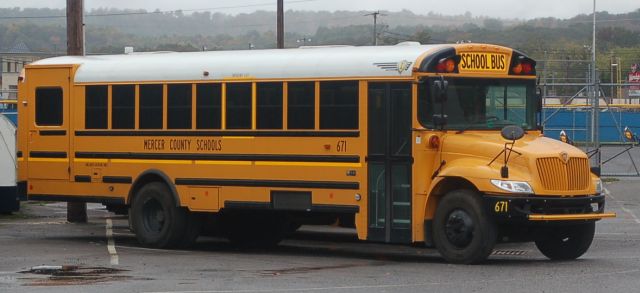
#671 is the largest wheelchair-accessible bus to have been added to the county's fleet in quite a while. It also appears to be equipped with an underfloor air conditioner. [Photo by Adam, 2021]
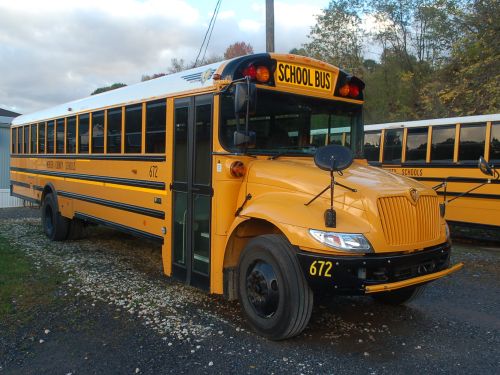
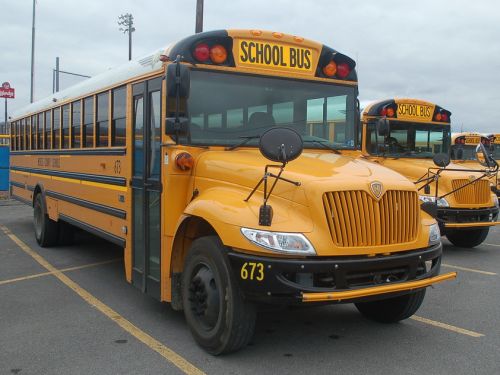
#672 and #673, two identical 77-passenger models. Since this year's buses are equipped with gasoline engines, they're visually distinguishable from the previous year's diesels by the absence of a diesel emission fluid filler door, and the deletion of the Cummins cowl emblem. [Photos by Adam, 2021]

#674. From the rear, Mercer County's 2022 buses are distinguished from those of previous years by under-bumper (as opposed to through-the-bumper) exhaust, the deletion of auxiliary backup lights, and redundant duplication of the fleet number. Photos by Adam, 2021]
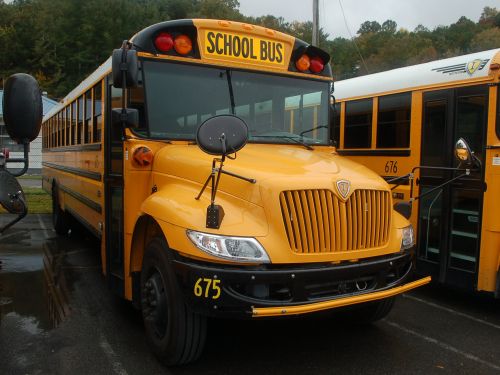
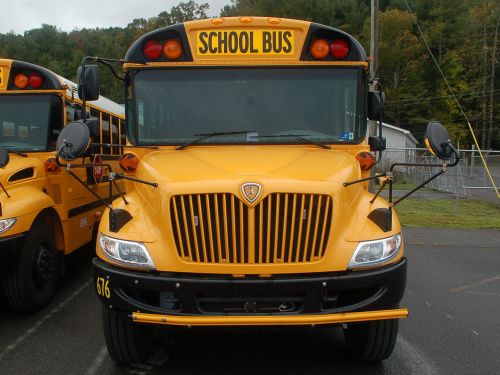
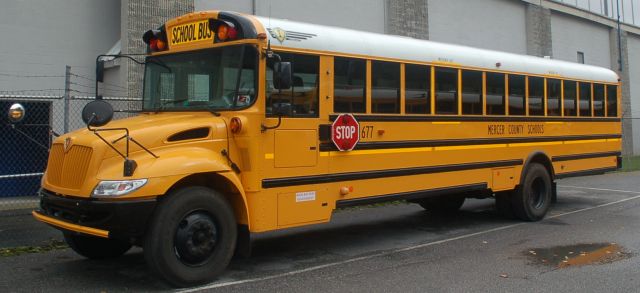
#675 through #677 are also 77-passenger models, and substantially identical to each other. [Photos by Adam, 2021]
| Bus |
Year |
Body |
Chassis |
Cap. |
Notes |
|---|---|---|---|---|---|
| 671 | 2022 | IC | (CE) | 65 | Rear wheelchair lift. |
| 672 | 2022 | IC | (CE) | 77 | 4DRBUPWN4NB550043. |
| 673 | 2022 | IC | (CE) | 77 | |
| 674 | 2022 | IC | (CE) | 77 | 4DRBUPWN8NB550045. |
| 675 | 2022 | IC | (CE) | 77 | 4DRBUPWNXNB550046. |
| 676 | 2022 | IC | (CE) | 77 | 4DRBUPWN1NB549562. |
| 677 | 2022 | IC | (CE) | 77 | 4DRBUPWN1NB550047. |
Twenty twenty two proved to be a very tumultuous year for Mercer County Schools. In May, the district was thrust into international news when it settled a lawsuit relating to the district's practice of inflicting Bible indoctrination classes on students, leaving children subject to harassment if they refused to participate. Unbelievably, these practices had been going on for over 75 years before a family risked its social capital and safety to challenge it. Sadly, this jibes closely with the author's personal experiences, whose years spent in the care of Mercer County Schools were marred by creationist junk science and other Christian Supremacist poison.
Fleet additions were slight, but the school district took delivery of its first new Blue Bird bus in eight years, powered by Ford's 7.3 litre Godzilla gasoline engine. Even more unexpectedly, a Girardin Type A bus based on a Ford Econoline cutaway van was added to the fleet. This represents the district's second Type A, and its first Canadian-built bus. In late 2022, Mercer County also took part in a six-week pilot test of an electric school bus on loan from the state Board of Education.
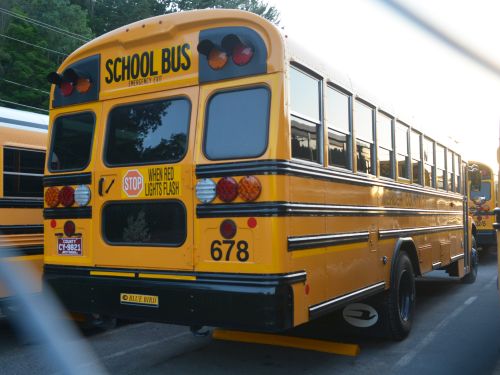
#678, a 59-passenger Blue Bird Vision. Being a 2023 model, this bus contains new features such as a revised radiator grille and molded plastic surrounds for the flashing lights. The "Stop When Red Lights Flash" decal appears to be a recent addition to the state's school bus specifications. [Photo by Adam, 2022]
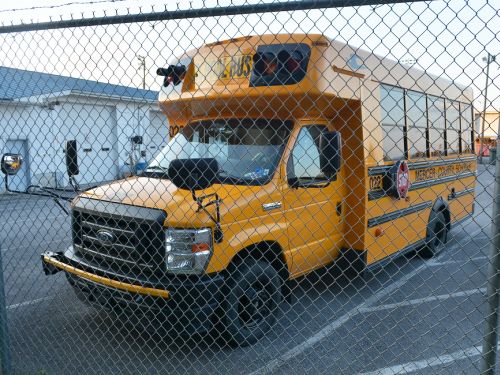
Not only does bus #022 have an unusual number, but it's an unusual bus: Mercer County's first Type A, built from a Ford cutaway by Girardin in Drummondville, Quebec and marketed through Blue Bird. A sarcastic pessimist might say, "Mercer County has been shrinking in population for 70 years, so it makes sense that their buses are now shrinking to match." :-P [Photo by Adam, 2022]
| Bus |
Year |
Body |
Chassis |
Cap. |
Notes |
|---|---|---|---|---|---|
| 022 | 2022 | Girardin Blue Bird | Ford (Type A) | 29 | |
| 678 | 2023 | Blue Bird | (Vision) | 59 | 1BAKDCJAXPF392167. |
Mercer County's tumult of 2022 was followed by a bonanza in 2023, at least for the school transportation fleet. Due to production delays, several Blue Bird buses that had been intended for delivery in 2022 were delivered this year as early 2024 models. These were soon supplemented by the "proper" 2024 model order, with both orders bearing a host of interesting running changes.
The school board hedged its bets on fuel types, acquiring new buses with both diesel and gasoline powertrains. Could the district's three-year delve into gasoline be a trend, a blip before reversion to diesel...or a stepping stone on the way to electrification?
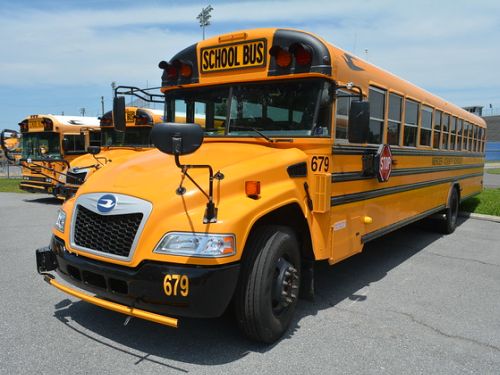
#679 was the first of this year's Blue Bird deliveries, and features a diesel powertrain. All early 2024 Blue Birds in the fleet feature an illuminated "School Bus" sign (a feature last seen in WV in 1981!), and a redesigned roof cap first seen on the "TX4" All American. [Photo by Adam, 2023]
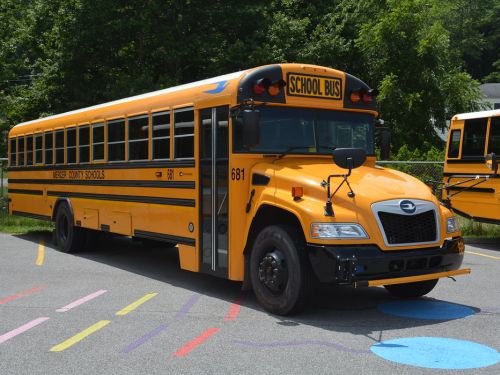
In recent years, Blue Bird has played around with its roof logo, linking the colour to the type of powertrain within. #681 is a 2024 Vision with a blue roof logo; ergo, it's a gasoline-powered bus. [Photo by Adam, 2023]
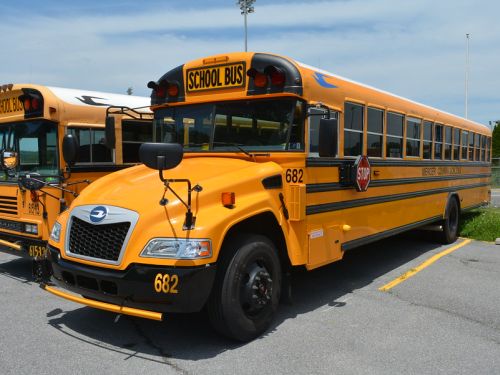
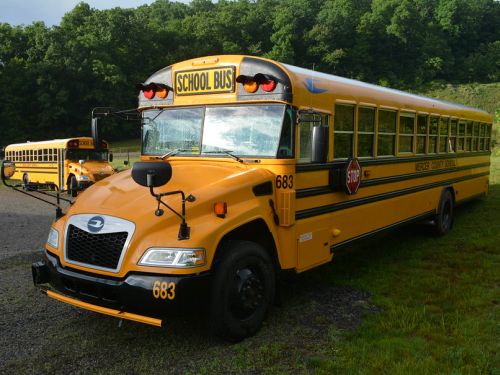
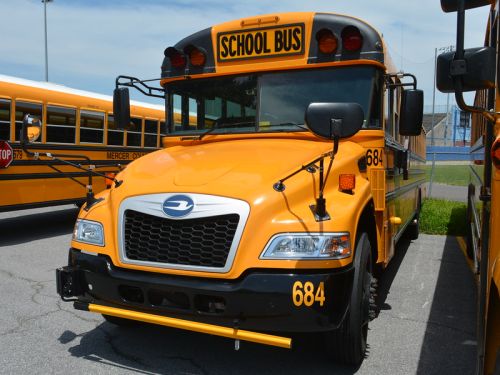
#682 through #684 are essentially identical, and are 77-passenger gasoline buses. New Blue Birds in this capacity are now built in a 13-window configuration, rather than the stretched 12-window configuration used in the 2000s and 2010s. [Photo by Adam, 2023]
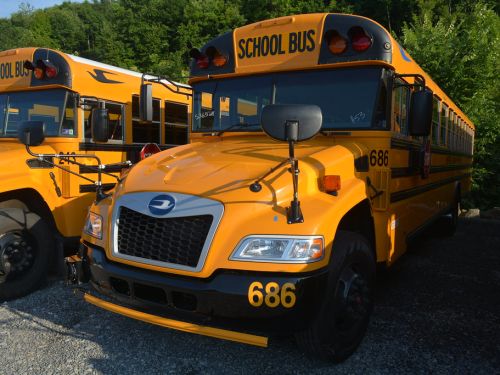
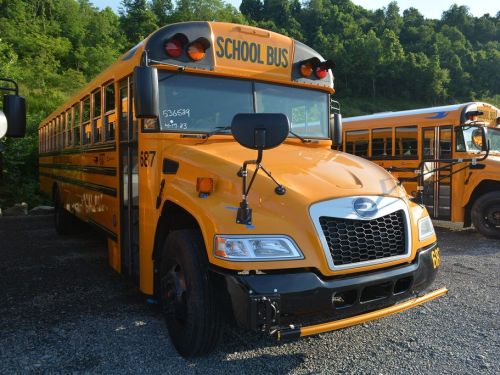
#686 and #687 are "proper" 2024 models, and lack the illuminated "School Bus" signs seen on earlier deliveries. These buses were so new at the time that they were still on the dealer's lot being prepped, and had not yet entered service. [Photo by Adam, 2023]
| Bus |
Year |
Body |
Chassis |
Cap. |
Notes |
|---|---|---|---|---|---|
| 679 | 2024 | Blue Bird | (Vision) | 77 | |
| 680 | 2024 | Blue Bird? | (Vision?) | ||
| 681 | 2024 | Blue Bird | (Vision) | 77 | |
| 682 | 2024 | Blue Bird | (Vision) | 77 | |
| 683 | 2024 | Blue Bird | (Vision) | 77 | |
| 684 | 2024 | Blue Bird | (Vision) | 77 | 1BAKJCJA0RF392156. |
| 685 | 2024 | Blue Bird? | (Vision?) | 1BAKJCJA9RF397940? | |
| 686 | 2024 | Blue Bird | (Vision) | 77 | 1BAKJCJA0RF397941. |
| 687 | 2024 | Blue Bird | (Vision) | 77 | 1BAKJCJA2RF397942. |
This brings us up to the present day, and the end of our nearly nine-decade timeline. Though dozens of local schools, hundreds of buses, and tens of thousands of riders have come and gone since 1936, one value has stayed true the entire time: Taking collective, public responsibility for public transportation to public education, and performing it with a safety, punctuality, and reliability unmatched by any other mode. In conclusion: The History of School Transportation in Mercer County, WV is truly remarkable to behold!
Thanks to all who have contributed. I couldn't have done this without you!